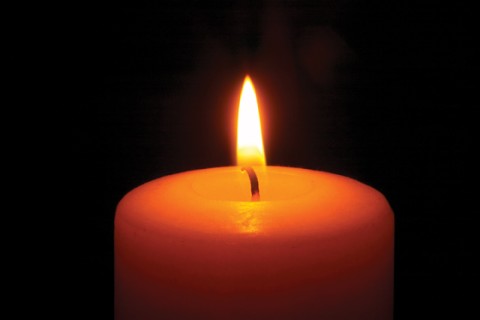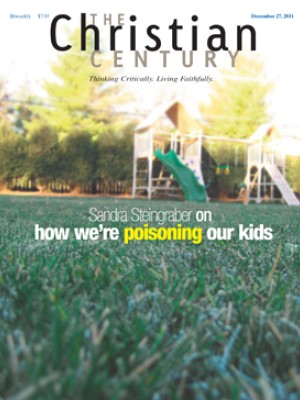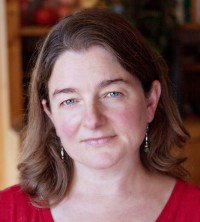Holy listening: The spiritual direction movement

Read the essential books list compiled by Richard Kauffman.
Read Daniel Schrock's review of Angela Reed's book on spiritual direction.
Read posts about how Ruth Workman and Sandra Lommasson became spiritual directors.
When Angela Reed was in seminary, she found her studies intellectually stimulating, but she felt that something was missing. Seminary life involved "a great deal of talk of how we know about God, but almost nothing of knowing God, and that grated on my soul," Reed recalls. When she heard about an opportunity to meet with a spiritual director, she jumped at the chance.
Reed began meeting with a Roman Catholic woman who invited her to watch for the presence of God in everyday life. A typical session included a period of silence, some kind of spiritual practice, and time to reflect on what she had been experiencing lately in prayer and in life. Her director suggested practices that pushed Reed to explore new ways of relating to God. At one point, the director encouraged Reed to use hand motions in prayer—a kind of "body prayer." That practice was at first uncomfortable for Reed, but she tried it. By this time, she trusted her director and knew that the relationship was moving her toward a deeper relationship with God, a relationship that knit together her body, mind and heart, her thinking and her actions.
Read our latest issue or browse back issues.
Reed is now a seminary professor herself, at Truett Seminary in Waco, Texas, and she has a special interest in the place of spiritual guidance for congregations and for seminary students.
"It is my hope that seminary students can receive the spiritual nurture they need while they also learn to interpret scripture, understand theology and prepare for the tasks of ministry," Reed says.
Cherri Johnson found her way to spiritual direction through an unexpected experience. She had been involved as a lay volunteer in nearly every facet of Methodist church life. One day, while working as a counselor at a church camp, certain words formed in her mind: "Come, rest in the sweet water of Babylon." The phrase was intriguing but baffling. "Sweet water" was not a part of her religious lexicon. She knew "living water," but what was "sweet water"? And what was sweet about Babylon? From what she knew of scripture, Babylon was a place of captivity and exile. Why were these words encouraging her to come and rest there? The words stayed with her. She read scripture with the words in mind and talked to her pastor about them.
After several months, she decided she needed to talk to somebody who was more familiar with this kind of experience. She got in touch with an Episcopal priest who had been trained in spiritual direction at the Shalem Institute for Spiritual Formation in Washington, D.C. Through him she learned about contemplative prayer and about spiritual direction—ancient practices designed to help Christians attend to the work of the Holy Spirit in individual and corporate life. Johnson learned Ignatian prayer techniques and lectio divina—reading and praying with the scripture and with the heart and body and not only the mind; she learned to sit in silence with God and wait for the quiet stirring of the spirit. (She eventually concluded that the "sweet waters" were the divine presence at work in the community of faith and in all things.)
Johnson's experience made her want to be trained as a spiritual director herself. But she couldn't find any resources available in her home state of Louisiana. Her interests led her to help establish the Spiritual Direction Training Program with the Academy for Spiritual Leadership, a part of the Louisiana conference of the United Methodist Church. She graduated with the first class in 2001 and has served as a small group supervisor for students for ten years.
Johnson's next project was to try to inject the practices of spiritual direction that she found so valuable into the life of a congregation. "I can't be the only Methodist who ever had a spiritual experience," she would joke with parishioners. She found that church members knew the language of discipleship and the practices of stewardship, Bible study, mission and fellowship, but the language of spiritual direction was foreign to them.
She began by offering congregation members what she knew best: one-on-one spiritual direction and experiences of contemplative worship. Since 2003, her initial approach has developed into a large and dynamic ministry that includes workshops and classes, one-on-one and group mentoring, retreats, contemplative worship and the integration of creative spirituality and the arts in congregational life.
Johnson says that the spiritual practices she discovered are lost elements of Methodism itself. Many spiritual practices familiar to Methodist founder John Wesley were eclipsed as Methodists gradually started focusing more on information than on formation. The inner journey of faith was superseded by a commitment to doctrinal certainties. The practice of spiritual direction offers a means to recapture a lost dimension of Christian life.
"This movement," Johnson said, "is the groaning of the Spirit in the church today. If you listen, you can hear the birthing."
Reed's and Johnson's stories are indeed part of a movement. Over the past two decades, the practice of spiritual direction has become an increasingly regular part of mainline Protestant spirituality. Reed and Johnson are two of more than 6,000 members of Spiritual Directors International (SDI), an organization that seeks to expand resources for what its president, Liz Budd Ellmann, calls the "ancient human experience" of offering spiritual aid and counsel.
The dramatic growth of SDI illustrates the trend: it had about 1,200 members in 1995 and about 6,000 by 2005, and it expects to have over 10,000 by 2016. Catholic sisters are still the group's single largest bloc of members, but the traditions represented range from Quaker to mainline Protestant to Roman Catholic to Orthodox to non-Christian.
While many members of SDI are laypeople, more and more pastors have made spiritual direction a central part of their ministries. The spirituality shaped by spiritual direction might be of special importance to pastors, Reed observes, because the demands of ministry are such that pastors often function out of a "false self." They may put on masks to hide their true struggles and opinions rather than risk displeasing those they serve. For many pastors, that false self becomes habitual, and they lack a safe place in which to take off the mask.
Spiritual direction offers a way to attend to God's presence in one's life in the context of a trusted relationship. Spiritual direction "is not about what we do, but about who we are," says Reed. "It helps us see how we've been operating falsely and begins to move us to the center."
In her research on pastors trained in spiritual direction, Reed notes that the practice often becomes more than an element of ministry. It informs and shapes the whole of it. The practice of spiritual direction informs the way ministers preach and the kind of questions they ask parishioners at coffee hour. It influences how they run meetings and when or if they refer parishioners to counseling.
Reed tells the story of one pastor who early in his ministry was driven simultaneously by the desire to please others and the desire to control them. Through spiritual direction, he gradually came to understand that "the Holy Spirit is already at work in every human being to fulfill God's purposes." This insight allowed him to work with others and himself with greater patience and clarity.
The rise of spiritual direction among Protestants got a big push in the mid-1990s when the Association of Theological Schools added spiritual formation as a category to be considered in the process of accrediting seminaries. At the time, according to ATS executive director Daniel Aleshire, seminaries were realizing that students lacked the kind of faith formation in congregations and denominational traditions that could have been assumed in the past. Some members of ATS felt that the new standards needed to reflect this transformed reality. Ministry, they argued, is not simply a matter of the well-formed brain.
Not all theological educators agreed. Some contended that whatever the state of students' faith development, faith formation was the work of churches, not seminaries, and it was not wise to ask seminaries to do something that other institutions should be doing. Both points of view remain well represented in ATS seminaries, Aleshire said.
In the end, ATS standards simply required that some attention be given to spiritual formation. That decision sent seminaries searching for appropriate programs.
Wesley Theological Seminary in Washington, D.C., for example, developed a program that encourages students to be part of covenant groups. Other schools developed courses and course materials on formation. Other institutions followed models of formation that had long been in place at Catholic institutions, including the practice of individual spiritual direction. Princeton Seminary offered spiritual direction in small groups, and it now offers both group and individual direction free of charge through the student health program.
Unlike pastoral counseling, spiritual direction does not draw directly on the disciplines of psychology and psychotherapy, though in some cases it is closely aligned with those disciplines. Many churches have begun spiritual direction centers or have included spiritual direction in the organization of pastoral counseling centers.
Joyce Krajian, the director of the Middleton Center, a pastoral counseling center connected with Bryn Mawr Presbyterian Church in Pennsylvania, does not see pastoral counseling and spiritual direction as conflicting pursuits. At the center, Krajian seeks to determine whether a client is a better candidate for spiritual direction or counseling by listening closely to the nature of the questions a person is asking. At times, direction and counseling work together, and at times it is clear that a person belongs in one program or the other.
Unlike pastoral counseling, spiritual direction is primarily about the work of God in the present moment. It is not about understanding family dysfunction or psychological pain. If someone's primary question, whatever their struggle, is "Where is God in this?" then Krajian refers that person to a spiritual director, not a pastoral counselor.
The Middleton Center has a plethora of programs and resources available to the church, but 90 percent of the center's clients for both counseling and direction come from outside the congregation. Ellie Stratton, a spiritual director at the center, said that many people still wonder: How does spiritual direction fit in with the traditional activities of church? How do spiritual directors communicate the value of prayer and meditation to busy congregants?
That question is widespread, said Ellmann, president of SDI. Spiritual directors have to work at explaining their programs and making them visible to the congregation. SDI has developed a button for spiritual directors to wear at coffee hour that says, "Ask me about spiritual direction."
Because spiritual direction resembles pastoral counseling in some ways, questions of credentialing often arise. But there is no general agreement on how to define what spiritual direction is and who should (or should not) engage in it. Spiritual Directors International is a central organization for the movement, but it does not issue credentials.
Different religious traditions have different ways of understanding who a director is and what that person does. The term director is itself a problem. Ellmann said that in describing what they do, spiritual directors often use the image of three chairs in a room: one chair belongs to the seeker, one to the director and one to the Holy Spirit. The actual "direction" is done by the Holy Spirit, not the director. For this reason, some have preferred to speak of companionship or accompaniment rather than direction. The director is simply someone who aids in the process of holy listening.
Whether or not to get involved in credentialing has been a subject of controversy within SDI. So far it has rejected that path and offered only a code of ethics. Some denominations have established their own credentialing programs so that they can have some control over who presents himself or herself as a spiritual director. This move provides some protection from radical individualism and from those who would declare that they have a gift in spiritual direction without its being acknowledged by a community. Certificate programs and curricula also answer the question, "What do I need to do to become a director?"
Ellmann noted that there is pressure toward professionalization in American society. People look for signs of training and credentials. In the case of spiritual direction, said Ellmann, they should be looking for a leading of the Spirit.
"Sometimes when it comes to spiritual direction, people think that a professional is going to be a better holy listener than a grandmother, and that isn't always the case," said Ellmann.
While holy listening might be a charism, a gift of the spirit, it does need a supporting structure. SDI encourages those who offer spiritual direction to be receiving direction at the same time. No one achieves the status of not needing direction anymore; the Spirit is always active, and everyone needs help listening.
Duane Bidwell, professor of practical theology at Claremont School of Theology, underscores the need for an interlocking, if informal, network of accountability. If someone were simply to declare herself a director and hang out a shingle in a church, Bidwell would ask, "Who are you accountable to in this practice? Who do you check in with to make sure you are observing appropriate boundaries, that you are not doing harm? How do you distinguish between the voice of God and the voice of yourself or the culture? What is your prayer life like?"
In this way, despite its focus on the "inward journey," those involved in spiritual direction seek to combat the self-oriented spirituality of contemporary culture. In both its philosophy and practice, spiritual direction suggests that the individual self is insufficient as a locus of meaning. No one can "do" spiritual direction by herself. While it may be the work of an individual to determine what the Holy Spirit is saying, the work cannot be done alone. It requires connection and community.
For this reason, pastors who are involved in spiritual direction—as both recipients and providers—find themselves immersed in spiritual friendships and companionships. And that experience can be transformative. United Methodist bishop William Hutchinson of the Louisiana Conference (home to the Academy for Spiritual Leadership) observes that the growth of spiritual direction among clergy in his area has had a significant, if subtle, impact. Clergy who are actively engaged in spiritual direction tend to be "less reactionary, less judgmental, more centered, more reflective. They search for deeper answers."
For many involved in this movement, spiritual direction is a crucial resource for the church today. With its attention to the inward journey, it attends to a widespread craving for authentic spirituality, but without pandering to the vagaries of consumer culture. It strengthens individual commitments while fostering deeper communities.






